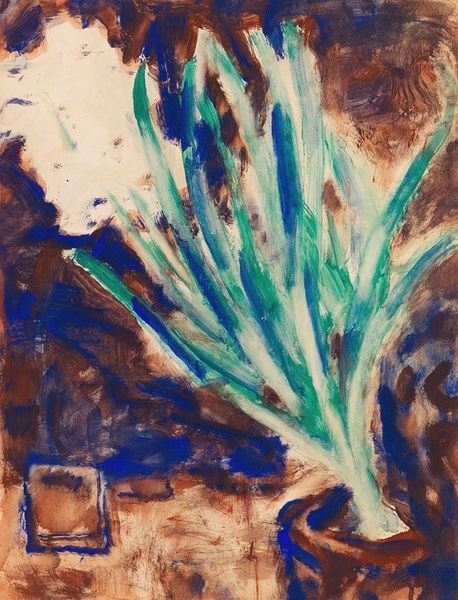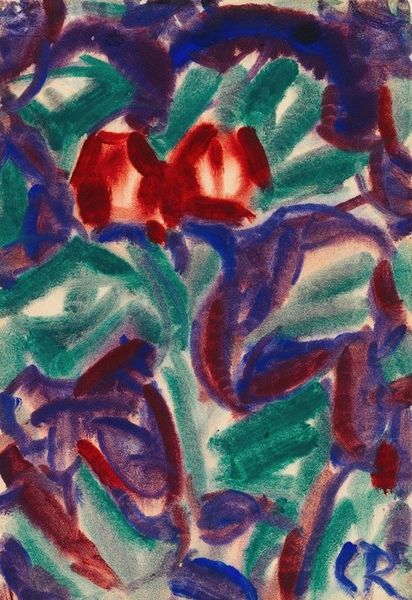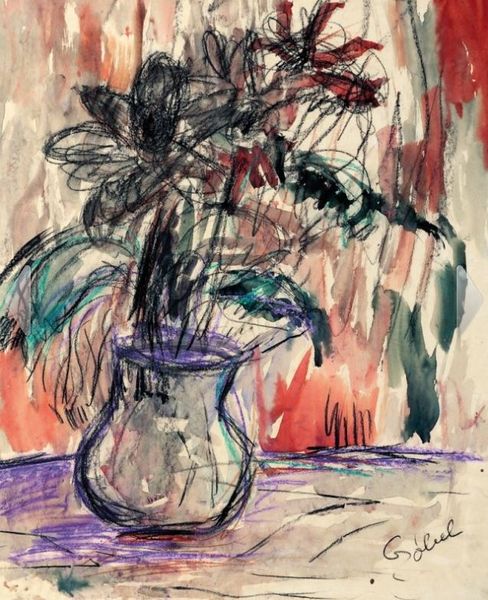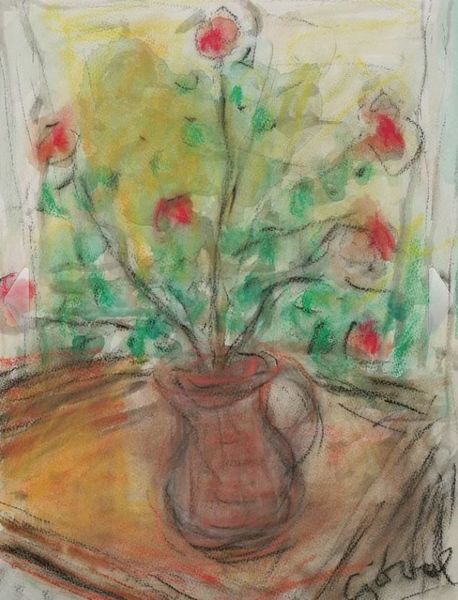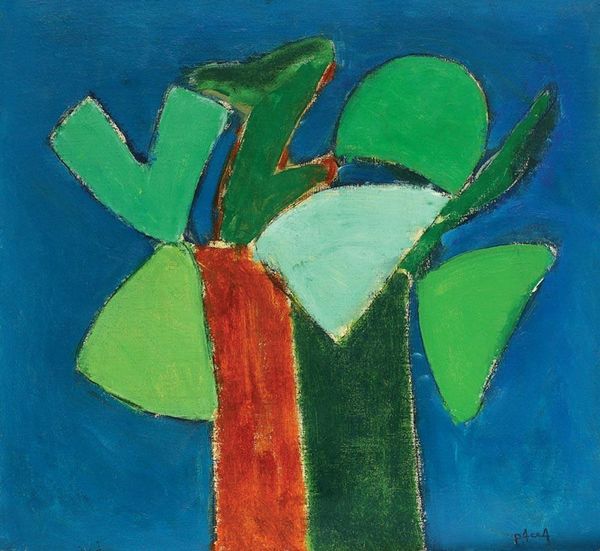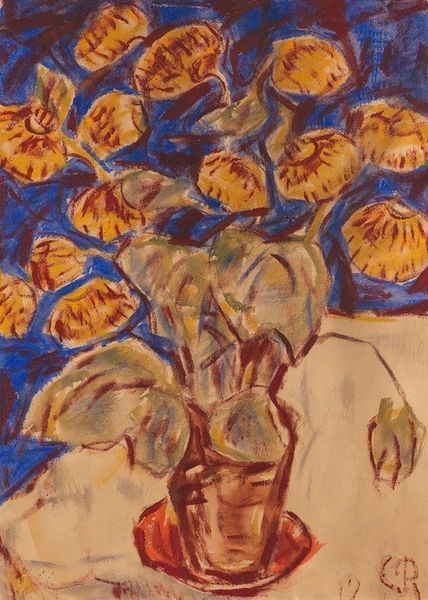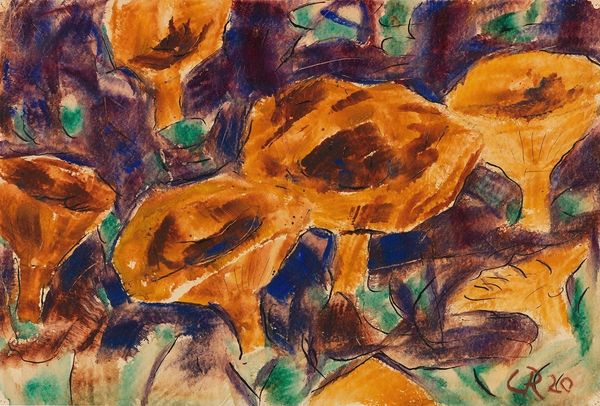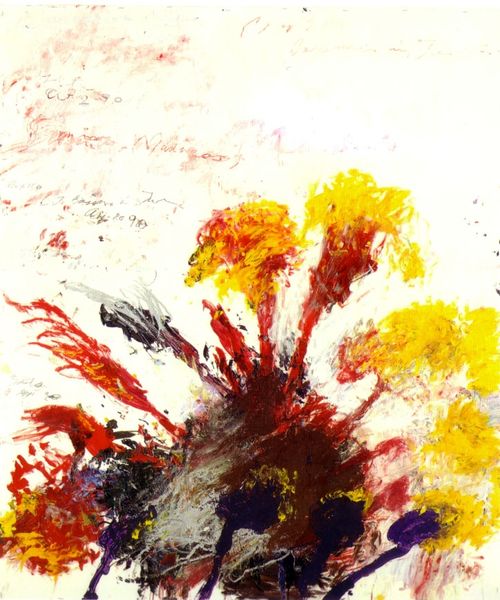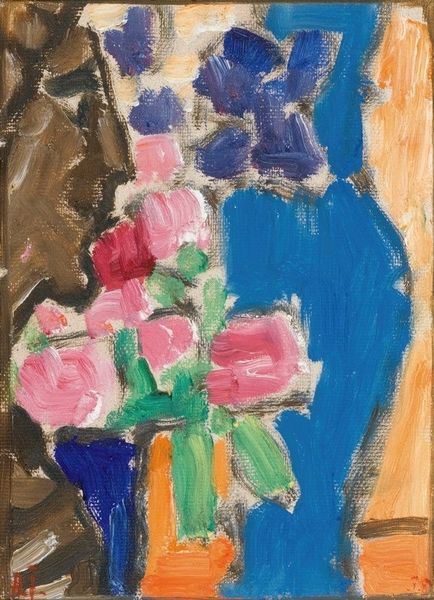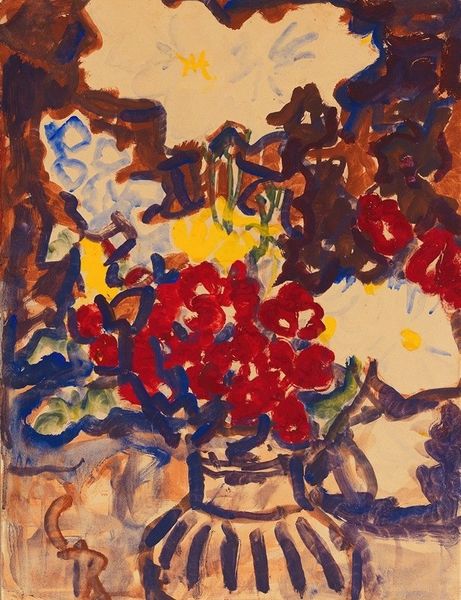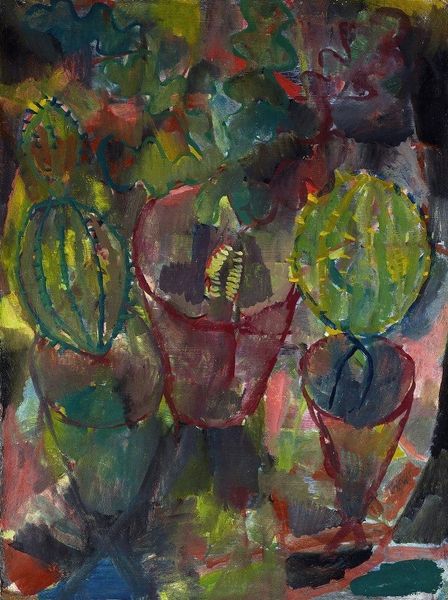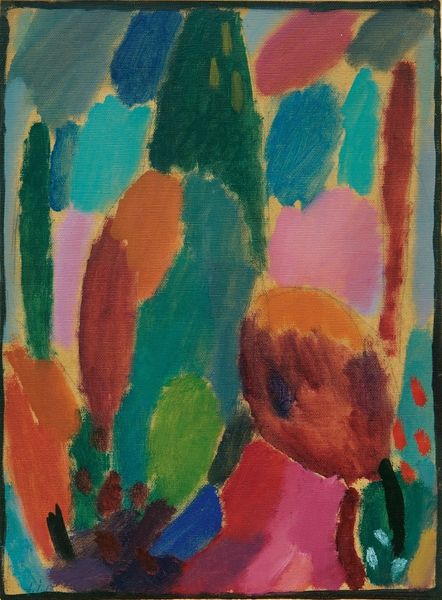
Copyright: Public Domain: Artvee
Curator: Christian Rohlfs painted this oil painting called "Alpenveilchen" in 1918. What are your initial thoughts on the composition? Editor: There is something disquieting about it. The color palette, heavy on browns and muted reds, doesn't immediately evoke the joy I associate with flowers. There’s an emotional tension here, a darkness in what should be light. Curator: It's fascinating that you pick up on that feeling. Rohlfs, at this point, was working squarely within an expressionistic framework. Notice the broad strokes, the use of color that doesn't necessarily mimic reality but amplifies an inner experience. Editor: Absolutely. The term "Alpenveilchen" refers to a plant, which one would assume is alive. This still life could be understood as a challenge to that organic liveliness as well, with implications related to ecological stress, but also the physical constraints impacting the domestic sphere for those facing conscription, the wounded, and relatives facing economic hardship during and after WWI. Curator: You draw interesting conclusions. I read this through the lens of Fauvism. It could also be about the interplay of lines and forms. The stems create a sense of upward movement, and the curving shapes of the leaves contrast that verticality. The whole painting balances precariously. Editor: And isn't that imbalance itself significant? Rohlfs painted this toward the end of World War I, amidst immense social and political turmoil. Does the painting give a sense of his alienation and social displacement, given his role as a teacher dismissed by the National Socialists later? The potted flowers in their confinement become emblems of larger issues. Curator: I wonder if overlaying a political reading onto it constrains its meaning. We could also simply appreciate it for its aesthetic qualities: its manipulation of light and shadow, its rendering of texture through paint application. The formal arrangement of elements works regardless of the social environment. Editor: It's about seeing the artwork as inherently related to social and personal turmoil. Curator: The expressionism evident in Rohlfs’ approach reflects on aesthetic values. Editor: Well, I suppose the true value lies in allowing both these perspectives to inform how we perceive this deceptively simple floral painting. It shows the value in making these connections visible.
Comments
No comments
Be the first to comment and join the conversation on the ultimate creative platform.
